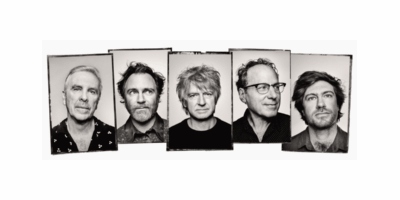With pleas claiming that ‘guitar music is dead’ constantly plaguing discussion, it’s easy to believe the days of riff-lords and shredders are long gone.
Whilst the mainstream’s wider interest in fostering the next Slash may have died down, the internet has allowed a generation of guitarists to flourish who combine genres and take old ideas, amplifying them with intense technicality and precision.
They may not come in the form of iconic riffs and face-melting solos, however, these guitarists have ushered in their own styles, pioneering movements that showcase creativity and craftsmanship.
We’re checking out some modern guitarists who have pushed the boundaries of the instrument.
Newton Faulkner
Newton Faulkner isn’t your average guy-with-a-guitar crooning epic campfire pop tunes. Although he is responsible for producing massive hits like ‘Dream Catch Me’ and ‘Gone In The Morning’, it’s his intricate use of percussive guitar stylings that give his acoustic jams a higher sense of texture and timbre.
Embedding ‘candy-rat’ stylings like bridge tapping and slap harmonics and sweeping chord progressions that touches of melancholy, his pop-meets-roots sounds goes down a treat.

Love Music?
Get your daily dose of metal, rock, indie, pop, and everything else in between.
Yvette Young
Not many guitarists have mastered the difficulty of math rock riffing, combining emo-tinged colours. Young’s style derives from the idea of “playing the guitar like the piano”, using both hands to create dizzying layers of melody.
Young’s greatest asset lies in her tapping abilities that allow for lighting-paced melodic structures that lie at the heart of her band Covet’s raw, unadulterated sound.

Michael Hedges
Pioneering the idea of using ‘extended techniques’ within the late 80s and early 90s, Michael Hedges legacy in modern guitar work is still felt today, with his cult-like fanbase continuing to honour his talent and creativity. Hedges focused on minimalism – creating simple polyrhythms that sent the listeners into a near hypnotic state.
His ‘new age’ sound also featured a heavy focus on dynamics and repetitive tapping that allows the for the melody to build over the foundation. Guitar legends like Steve Vai and Joe Satriani have recognised his importance, with Vai stating that his music ‘transcends genre and trend’.

Jon Gomm
On Passionflower, Gomm truly takes expressive techniques to a new level of textured experimentation. Gomm basically defines what it means to literally ‘extend’ the functions of a guitar, musically hitting its surface to make snare drum, bass drum and bongo sounds, re-tuning strings to achieve bass tones and pinch harmonics fo synthesizer-like effects. Try learning this without gauging an eye or popping a string.

John Butler
‘Ocean’ is one of the most iconic pieces of Australian music of all time. Anyone who’s been lucky enough to witness a performance of the ever-developing track live will immediately note just how emotionally poignant it is, founded upon noodling away with an array of incredible melodies and textures.
The strong focus on undying, driving speed that ebbs and flows between lusciously picked arpeggios and kind-yet-aggressive strummed open chords that culminate in a climatic sonic feast.

Andy Mckee
Every budding guitarist has attempted to learn the infectiously catchy ‘Drifting’. Sparking the inspiration behind hundreds of HSC music performances, Andy McKee has built a career on crafting the most sentimental of melodies, carried by intense technical aptitude. Often with technicality this high level, emotion gets lost – not with Andy McKee.

Tricot’s Motoko ‘Motifour’ Kida
Tricot are one of rock’s most innovative current acts, lead by the force that is Motoko Kida. Taking the rawness of punk and the unfiltered aggression and badassery of metal, Kida plays in a technical math rock style unmatched by her peers – conveying pure anger, angst and technically is often a difficult feat as one of the ingredients is often compromised.
Kida uses the electric guitar as both a percussive and melodic tool, fuelling the power of the three-piece that blend jazz, J-Pop and mathcore.

Antoine Dufour
As another faithful to the candy-rat tradition, Atoine Dufour has built an empire on technical complexity and solid polyrhythmic textures. You could arguably say he’s mastered ambient and progressive music that transcends global cultures, whilst maintaining a wholly emotional and moving edge.



































